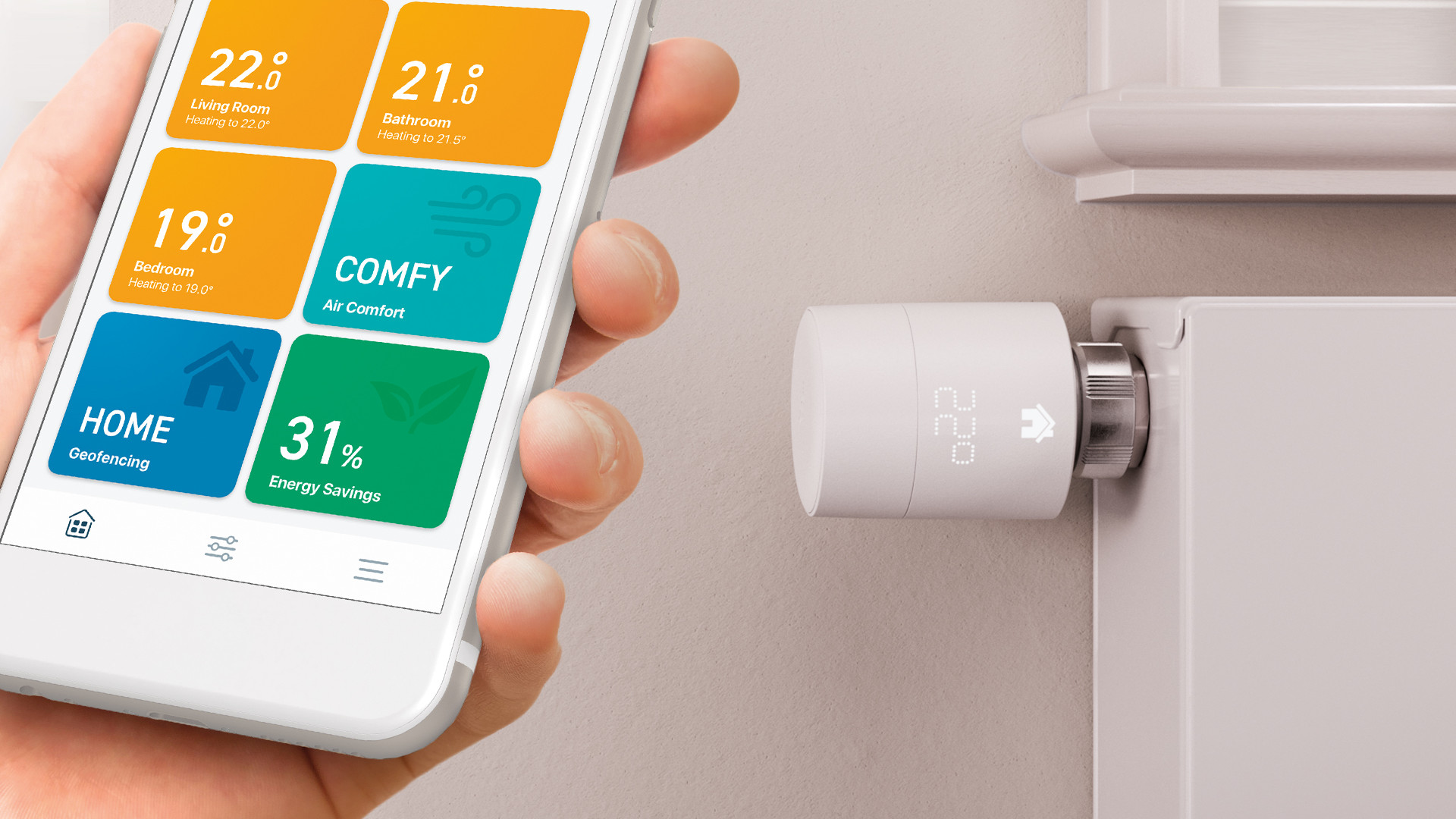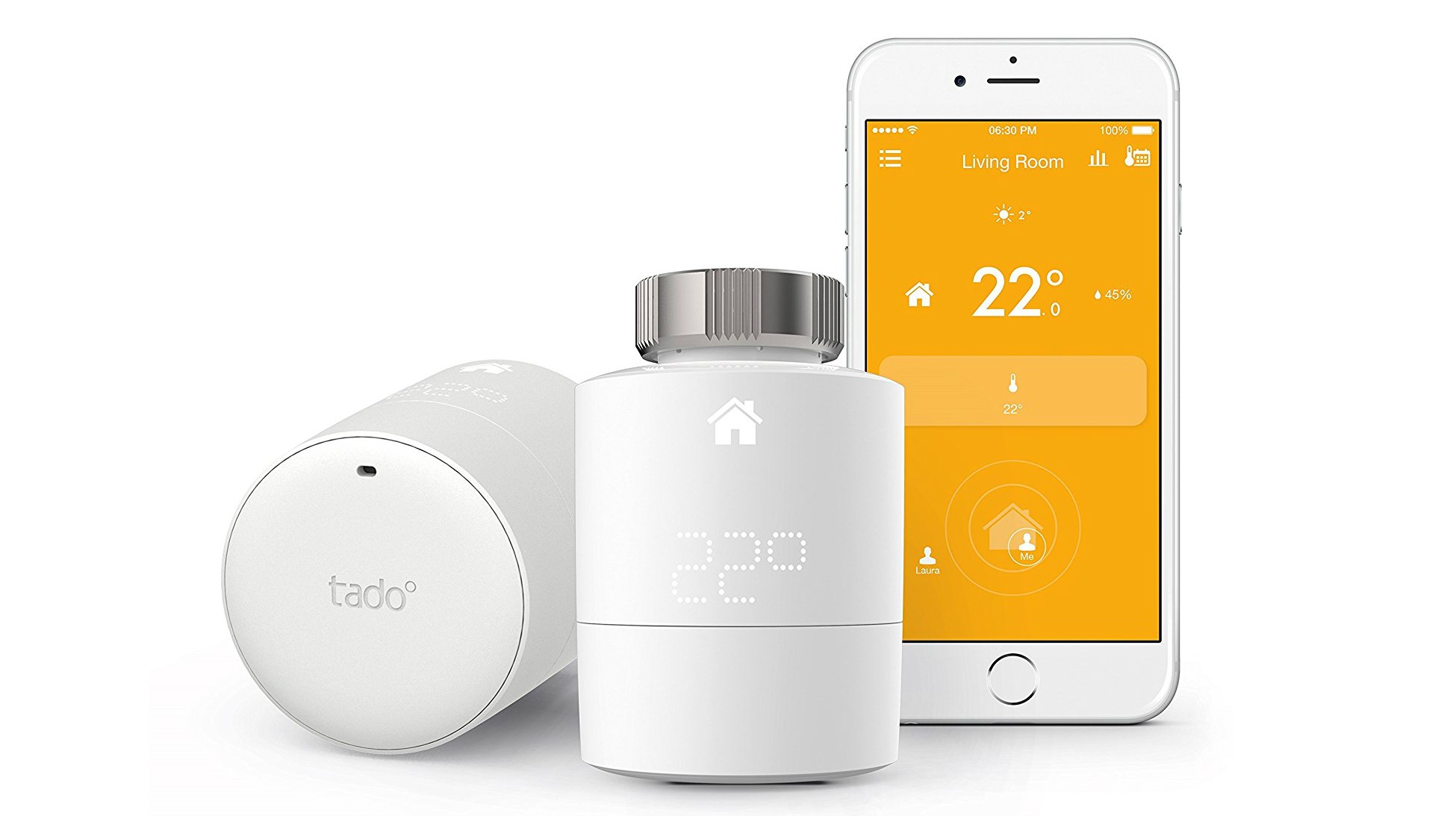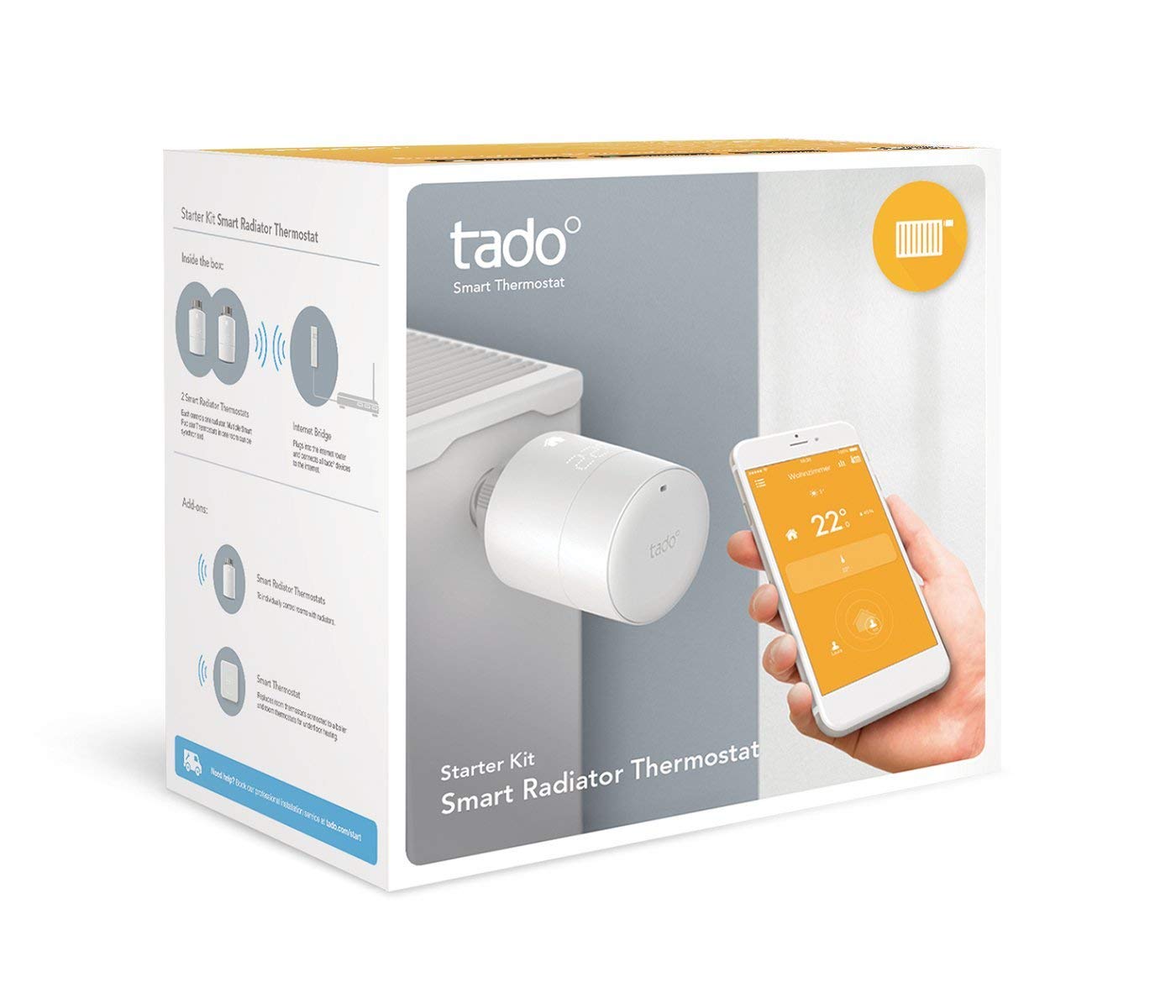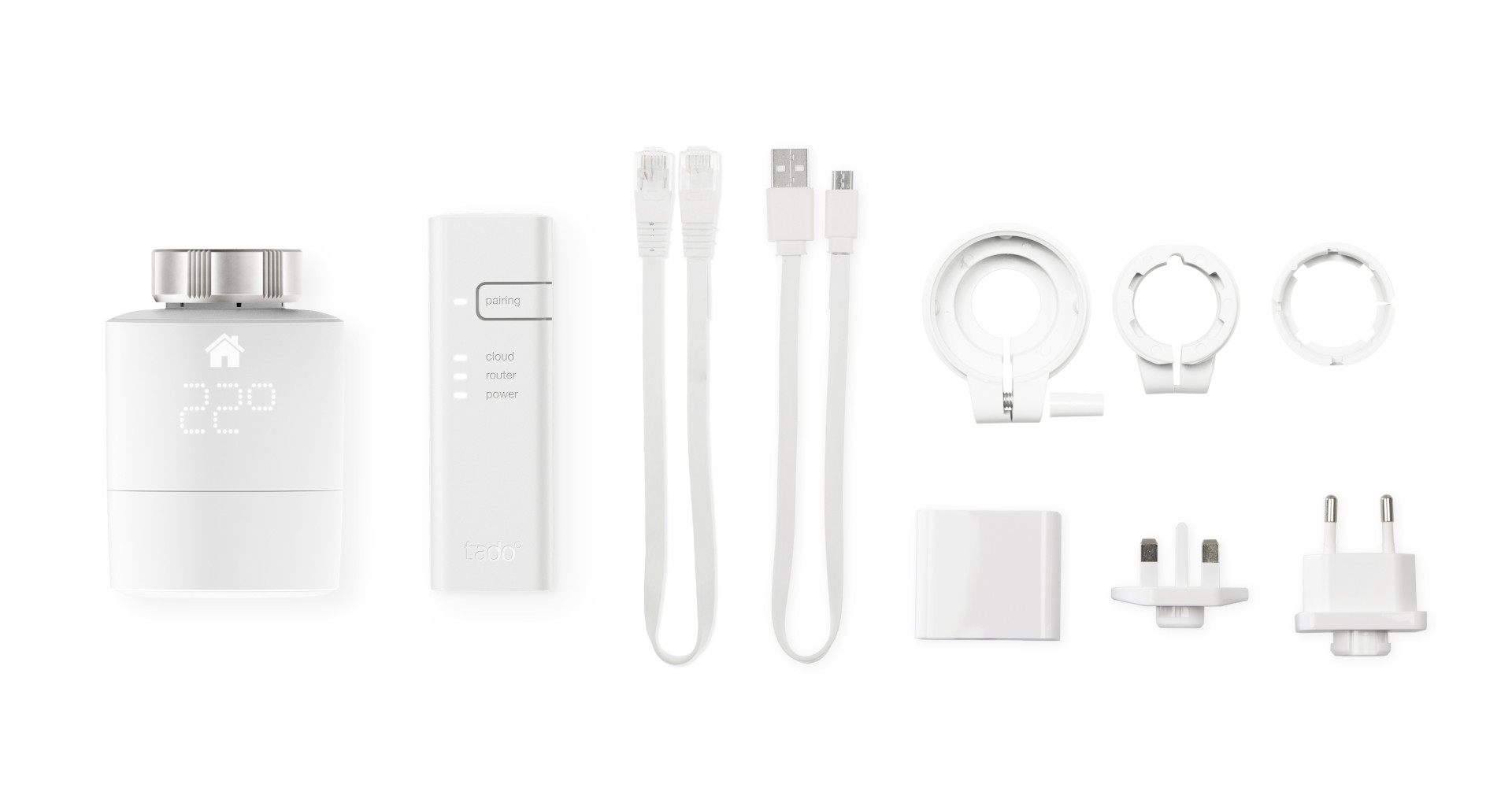
Looking broadly at all the best smart thermostats, they each carry their own advantages. Some are extra-smart, some are very attractive, some are easier to install. But it's arguably Tado's Smart Radiator Thermostat V3+ makes the best case for the old-school thermostat being consigned to the scrap heap. These thermostats replace the valves on your radiators, and do their work from there, which provides them with some important extra powers.
It makes a mockery of the classic thermostat's monolithic nature and takes ideas of wireless temperature control explored elsewhere to their logical conclusion. It's really neat, in other words.
It can't be all good, though, so we ask the question: should you buy Tado? Are Tado Smart Radiator Thermostats, or indeed the Tado Smart Thermostat itself (both now on versions three) the best smart thermostats for your home? That's going to depend on your home…
What's special about Tado Smart Radiator Valves?
A system like Nest (to pull out one example) traditionally places a single smart thermostat in one place in your home, judging the whole house's temperature solely on that one location. In some regions Google will sell you remote temperature sensors for Nest, giving you (and it) more data about the different rooms of your home, but to heat different areas differently you'll need a heating system that's was built to be zoned as well as individual Nest Heat Link modules controlling each zone. If you didn't start out with a zonal system, that will be impractical and over-expensive to achieve in most cases.
Tado's Smart Radiator Valves act as room sensors, picking up what the temperature is in individual spaces in your home, and they're able to adjust the flow of hot water to your radiators automatically so that each room matches the temperature you're looking for. Essentially this brings you intricately zoned heating without the hefty plumbing fee.
You can use the Smart Radiator Valves as part of a fully Tado-equipped system, adding individual room control to the overall heat management of the company's Smart Thermostat, but you don't explicitly have to. It's equally feasible to just put Smart Valves on your radiators and combine them with a wireless control unit attached to your boiler, or even to use them in conjunction with a dumb old thermostat.
- Which is the best system to build on? Nest vs Hive vs Tado
- Which Nest is best? Nest vs Nest E

What's not so special?
Tado gets you room-by-room temperature sensing and room-by-room control, which is pretty smart, but it's not the brainiest kit going. Where Nest learns about your habits, knows when you're home, gets fully acquainted with your boiler and works out the time it tends to take to heat up your rooms, Tado does a lot less. In fact, its products are a lot closer to traditional thermostats; you can set your own schedules and desired temperatures, but there's little in the way of the learning found elsewhere.
Sign up to the T3 newsletter for smarter living straight to your inbox
Get all the latest news, reviews, deals and buying guides on gorgeous tech, home and active products from the T3 experts
Tado Smart Radiator Thermostats each contain their own temperature sensor, which is sort of the point, though the fact that the sensor is placed right next to a heat source means you may need to finesse its temperature levels somewhat to make that the overall room temperature matches in your mind what you've set it to.
There's no proximity detection, either, which means you'll need to be relatively hot on your app management if you want to avoid warming rooms which are unoccupied.
What are the benefits of Tado Smart Radiator Thermostats?
The key benefits of the Tado Smart Radiator Thermostat are pretty obvious. First, you should be able to get that ideal temperature you're looking for throughout your home. If one person prefers a cooler bedroom and another likes it hot, everyone can get the environment they're looking for. Similarly, if you have a larger or more poorly insulated room which needs a little extra heat compared to the rest of your home, you can make that happen automatically. Alternatively you can warm those rooms you use at different times of the day to ensure they're ready to go when you are – the office during the day and the bedroom late in the evening, say.
The knock-on effect is that you'll be taxing your boiler less, only generating as much heat as is required to get the precise temperatures you're looking for, and this will mean a small but significant energy saving over time. And you'll be much more comfortable while you're doing it.

What are the drawbacks?
These are mechanical devices which turn a valve in your radiator. That's not difficult to do, but it's not exactly a silent operation, and it does demand a fair amount of battery power – so you'll likely want to save temperature changes for waking hours and replace the batteries frequently. If you're in a room with multiple radiators, a change could mean quite the noise – and bear in mind that we understand there's a limit of 10 total units throughout your home, though this will be enough for most people.
Some of Tado's more complex features are behind a subscription paywall. This means things like automatic geofencing, which can tell when your phone is not at home and adjust temperatures to match, require that monthly payment – though you'll get an alert to manually change your settings even if you don't cough up.
What do Tado Smart Radiator Thermostats cost?
Depending on your home, a full deployment of Tado Smart Radiator Thermostats could mean a serious outlay; if you were to fill up all 10 slots at full price, you'd be looking at around £700 before even adding the required Internet Bridge or a main Tado unit. A smaller rollout in those rooms that matter will likely feel more reasonable – and if you're just looking to make sure a sun-facing room doesn't get too hot, a single unit will make a big difference for little cash.
Next to the competition, though, it's not so bad; Tado's thermostatic valves are, in general, slightly cheaper than those of the Honeywell Evohome system, its only real direct competition. Another competitor, the Ecobee SmartThermostat, does work with proximity detecting smart sensors designed to be scattered around your home and should come in cheaper for a complete setup – but they're not radiator valves, so does it really count?

So, should you buy Tado Smart Radiator Thermostats?
There are certainly a number of potential drawbacks to employing the Tado Smart Radiator Thermostat, but if you're looking to both make serious energy savings and get your heating environment absolutely spot on there's little on the market which can match it.
You'll have to work for your prize a little more than you might with a smarter thermostat system, and it's possible Tado will develop features like proximity detection for future iterations of the hardware. For now, this is a unique way to employ room-by-room heating control even if you don't have a main smart thermostat controlling your overall heating network. It's a great choice, provided you're happy with the small caveats.
T3 magazine's own Gadget Guru is a 25-year veteran of the tech writing wars, and has the scars to prove it. He's written for the UK's biggest technology publications, and knows everything from smart doorbell voltage needs to how to bend Windows to his every whim.


